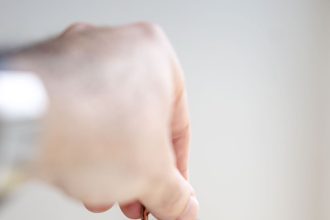Drones, also known as Unmanned Aerial Vehicles (UAVs), are taking the world by storm! No longer just for military use, these high-flying gadgets have become increasingly popular for recreational and commercial purposes. But with great power comes great responsibility… and new legal challenges. How do drones impact personal injury lawsuits? And what opportunities do they present? Buckle up, folks – we’re about to take a deep dive into the fascinating world of drones and the legal landscape they’re shaping.
The Sky’s the Limit: Drones on the Rise
In recent years, the drone industry has experienced rapid growth, and it’s not showing any signs of slowing down. In fact, the global drone market is expected to be worth over $43 billion by 2024! With advances in technology, drones are becoming more accessible, affordable, and versatile, making them attractive for a wide range of applications.
From aerial photography and agriculture to search and rescue missions, drones are transforming the way we live and work. But as these flying machines become more commonplace, they also present new risks – and legal challenges.
Watch Out Below: Drone-Related Personal Injury Cases
As drone use increases, so does the potential for accidents and injuries. Drones can cause damage in a variety of ways, including:
- Collisions with people or property: A drone that’s flown too close to others or not under proper control can crash and cause injuries. Think about it – a drone falling from the sky can pack a serious punch!
- Privacy invasion: Drones equipped with cameras can easily capture images and videos without the subject’s consent, leading to potential privacy violations and emotional distress.
- Interference with other aircraft: Drones that enter restricted airspace can pose a threat to commercial and private aviation, potentially causing catastrophic accidents.
These types of incidents have led to a growing number of personal injury lawsuits involving drones. But how are courts handling these cases? And what does this mean for the future of personal injury law?
Navigating Uncharted Territory: Legal Challenges in Drone-Related Personal Injury Cases
As drone-related personal injury cases become more prevalent, courts are forced to navigate uncharted legal territory. Many existing laws simply weren’t designed with drones in mind, making it difficult for courts to apply them consistently.
For example, consider the issue of negligence. To establish negligence in a personal injury case, the plaintiff must prove that the defendant breached a duty of care, causing injury. But what standard of care should drone operators be held to? The FAA has established regulations for drone use, but these rules may not provide a clear-cut standard for determining negligence in every situation.
Additionally, the unique characteristics of drones raise questions about liability. Who should be held responsible for a drone-related injury – the operator, the drone’s manufacturer, or both? These are just a few of the many legal challenges that courts face when dealing with drone-related personal injury cases.
New Opportunities: How Drones are Shaping the Future of Personal Injury Law
Despite the challenges, drones also present new opportunities for personal injury law. For one, they can provide valuable evidence in personal injury cases. Aerial footage captured by a drone can help establish the facts of an accident, providing a bird’s-eye view of the scene that might not be possible with traditional methods.
Moreover, drones are pushing the legal system to evolve and adapt to new technologies. As courts grapple with the legal challenges posed by drones, they’re helping to shape the future of personal injury law. This process is essential for ensuring that our legal system remains relevant and effective in the face of rapid technological change.
Frequently Asked Questions about Drones and Personal Injury Law
How can I protect myself from drone-related injuries?
To minimize the risk of drone-related injuries, always follow the FAA’s guidelines for drone use, including registering your drone, maintaining line-of-sight while flying, and staying clear of people and property. And, of course, always fly with caution and common sense.
Can I sue someone for invading my privacy with a drone?
Possibly. Privacy laws vary by state, but in some cases, you may be able to sue someone for invading your privacy with a drone. If you believe your privacy has been violated, it’s a good idea to consult with a personal injury attorney experienced in drone-related cases.
What should I do if I’m injured by a drone?
If you’re injured by a drone, seek medical attention immediately. Document the incident, including taking photos of your injuries and the scene of the accident. If possible, gather contact information from witnesses and the drone operator. Finally, consult with a personal injury attorney experienced in drone-related cases to discuss your legal options.
In Conclusion: The Sky’s the Limit for the Future of Personal Injury Law
As drone use continues to soar, personal injury law must adapt to address the unique challenges and opportunities presented by these high-flying devices. From establishing new legal standards to leveraging drone technology for evidence collection, the impact of drones on personal injury law is undeniable.
If you’ve been injured in a drone-related incident, it’s essential to consult with an experienced personal injury attorney who can navigate the complex legal landscape and help you seek the compensation you deserve. To learn more about personal injury law and how it applies to drone-related cases, check out this helpful resource on Seabrook personal injury law.
Remember, folks – with great power comes great responsibility. As drone use continues to grow, it’s essential for all of us to do our part to fly safely and responsibly. Happy flying!















